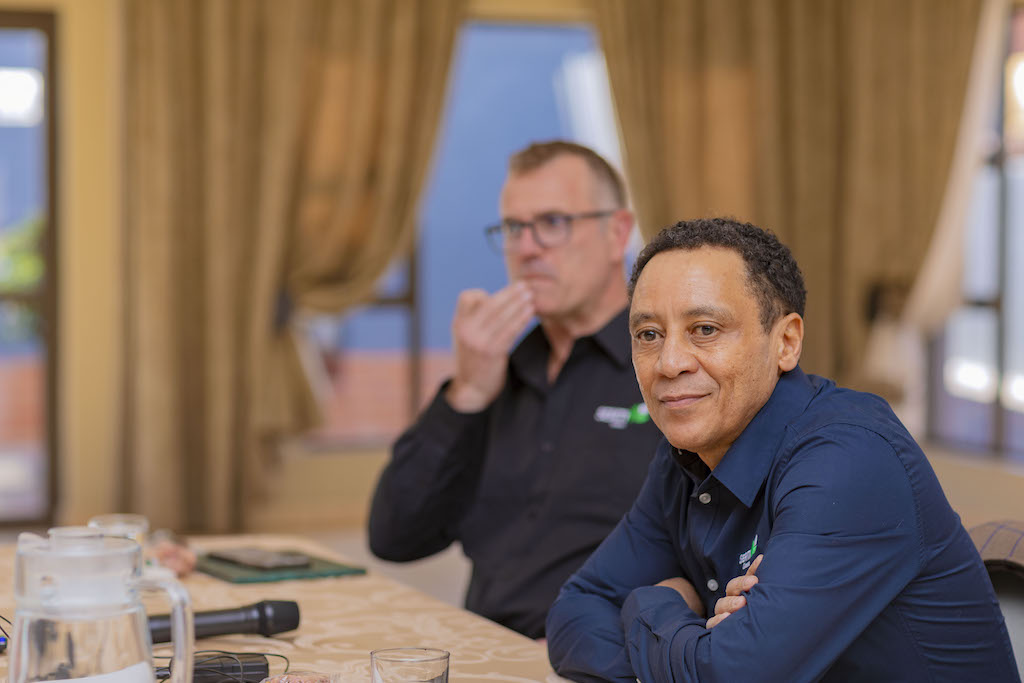
24 Jul Mpumalanga is going with the wind
Wind farms are picking up speed in the province at the heart of South Africa’s energy transition, reports Thabo Molelekwa
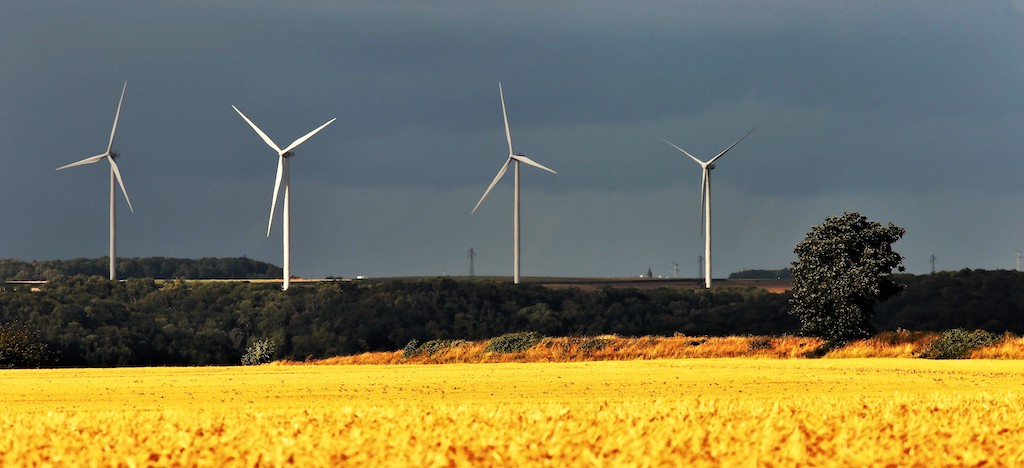
Bright future: Wind energy projects in Mpumalanga have the advantage of using existing infrastructure from coal plants. Photo: GKR Falcon / Flickr
Mpumalanga, historically reliant on coal-based power generation, is witnessing a notable shift towards renewable energy and the emergence of wind farm projects. Until now most wind farms have been situated in coastal provinces and were uncommon in South Africa’s energy heartland.
The province is grid-rich due to historical investments in coal plants, making it a good location for these new energy projects, said Jesse Burton, a researcher in the Energy Systems Research Group at the University of Cape Town.
“There’s a lot of grid capacity available, and they’re close to high-demand energy load centres,” she told Oxpeckers.
According to Burton, starting renewable energy projects in the province that is responsible for more than 80% of South Africa’s coal production and is home to 12 of the country’s coal power plants shows communities that there’s an energy future beyond coal. “Mpumalanga is very suitable for all sorts of renewables, including wind and solar,” she said.
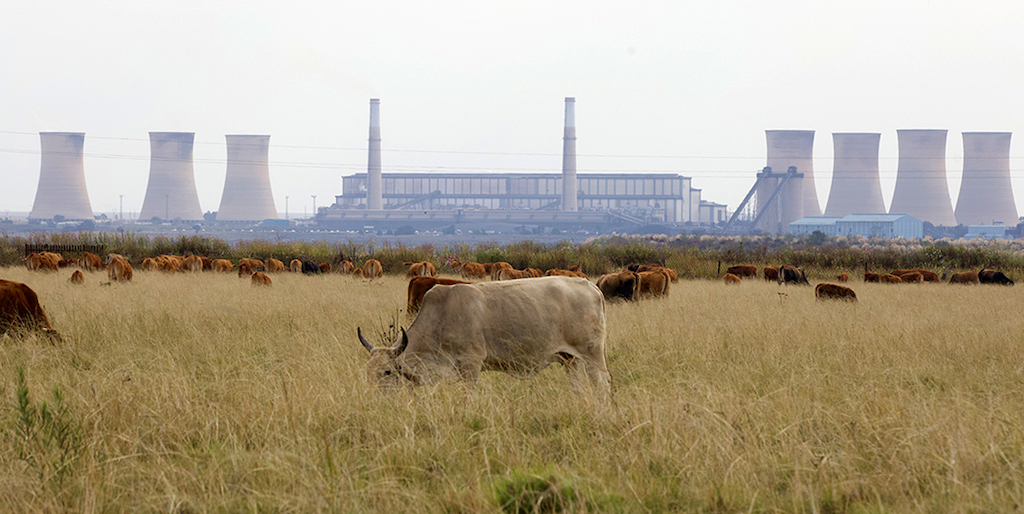
The Hendrina Wind Energy Facility is about 20km away from the Hendrina coal power station (above), scheduled to be decommissioned between 2027 and 2030. Photo: Dianah Chiyangwa
Hendrina wind farm
Two wind farm projects are currently emerging in the Mpumalanga province. One is a project in Hendrina in the Steve Tshwete Municipality, where a 210MW wind farm is being developed about 20km from the Hendrina coal power station.
Scheduled to begin construction in December 2024 and to reach full operational capacity by November 2026, the project is a partnership between electricity trader Apollo Africa, which is owned by JSE-listed Reunert, and Enertrag South Africa, a subsidiary of the German-based renewable energy company Enertrag AG.
This project, according to the #PowerTracker tool, is in the final stages of securing a crucial grid-connection budget quote from Eskom, making it one of the few private wind projects to have achieved that milestone to date.
Oxpeckers reached out to Enertrag to get more details regarding the commercialisation milestones, project specifications, economic and environmental impacts, its partnership with Apollo Africa, investment and funding, community involvement and technical aspects of the wind farm development in Hendrina. However, the company declined to respond, stating: “We consider the level of detail you seek to be commercially sensitive, particularly as we are currently progressing towards commercialising this project.”

Major milestone: Mike Teke (right), CEO of Seriti Resources, the parent company of Seriti Green, headed by Peter Venn (left), during a recent interview at the Ummbila Emoyeni project. Photo: Thabo Molelekwa
Ummbila Emoyeni project
Between Bethal and Morgenzon, Seriti Green has begun construction on a 900MW wind farm. The company has signed a power purchase agreement with its parent company, Seriti Resources, to supply 155MW of wind power generation for its coal-mining operations and will sell the remaining 745MW to Eskom.
Named Ummbila Emoyeni, this development marks a major milestone in Seriti Green’s broader renewable energy goals, which aim to develop 3,000MW of wind and solar energy capacity within the next decade.
According to Seriti, the Ummbila Emoyeni project is not only a substantial investment in renewable energy but also a significant stride in their commitment to sustainability. Seriti aims to reduce its carbon dioxide emissions by up to 350,000 tonnes annually, effectively halving its current emissions footprint.
Speaking to Oxpeckers, businessman Peter Venn, who is currently the chief executive of Seriti Green, emphasised the importance of integrating renewables and coal: “The critical thing for us is not renewables or coal, but renewables and coal. We’ve got this trilemma of energy security, cost of energy and just transition, and one needs to work through all of them; we are not climate denialists, but realistically, coal is going to be around for some time.”
Early-stage construction on Ummbila Emoyeni began in December 2023, with full-blown construction starting in April this year, he said. Full generation is expected by the end of 2026. “The project is being built in 155MW phases, each costing about R5-billion. By the end of this year, we will start with 310MW, followed by another 310MW in 2025.”
According to Venn, this 900MW project is projected to cost R25-billion. Seriti Resources holds a 55% stake in the project, while Standard Bank, RMB and Venn’s family holding company, Venn Energy, each owns 15%. RMB and Standard Bank have provided substantial debt funding of approximately R4-billion, contributing significantly to the project’s financing.
Venn emphasised the importance of long-term debt facilities for renewable energy in keeping tariffs low. He further noted that South Africa’s commercial banking sector has actively provided 15- to 17-year debt for such projects. “So once the project starts operating, it’s going to take us 15 to 17 years to pay off the debt,” he told Oxpeckers.
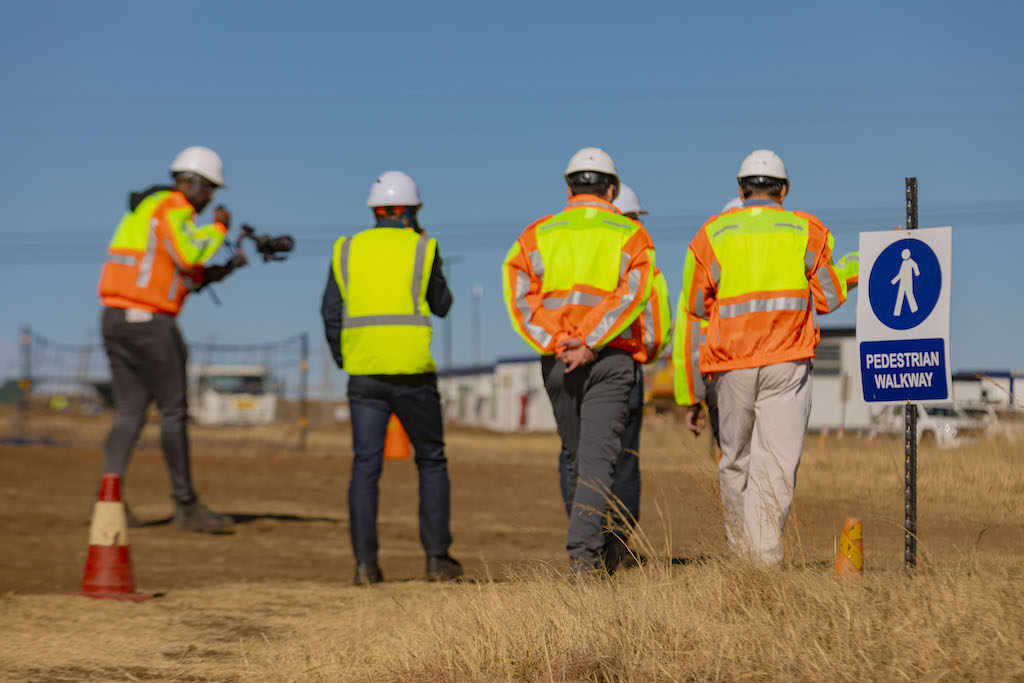
On the way: Full-blown construction on the Ummbila Emoyeni project started in April this year, and full generation is expected by the end of 2026. Photo: Thabo Molelekwa
Pushbacks
While the history of these kinds of projects has been marked by pushbacks in provinces like the Northern Cape and Western Cape between landowners and companies failing to meet the expectations of nearby communities regarding job creation and other related benefits, Seriti promises that Ummbila Emoyeni will result in a significant investment in Mpumalanga, along with the creation of jobs, procurement opportunities and social investment expenditures.
Venn highlighted that this project is the first of its kind in Mpumalanga and significant investments will be made to benefit local communities, including road infrastructure and employing local contractors, he said.
He noted that there were no major challenges in developing the project, just minor delays from the municipality. “Wind farms are very different developments, so we had to do a lot of education with the municipality. And we’ve conducted community engagements for two years,” he said.
Regarding uncertainties about job losses in the coal sector, Venn told Oxpeckers that “an operating wind farm is never going to be able to absorb an entire coal mine or a coal power station. So it’s imperative that we grow the greater economy of Mpumalanga”.
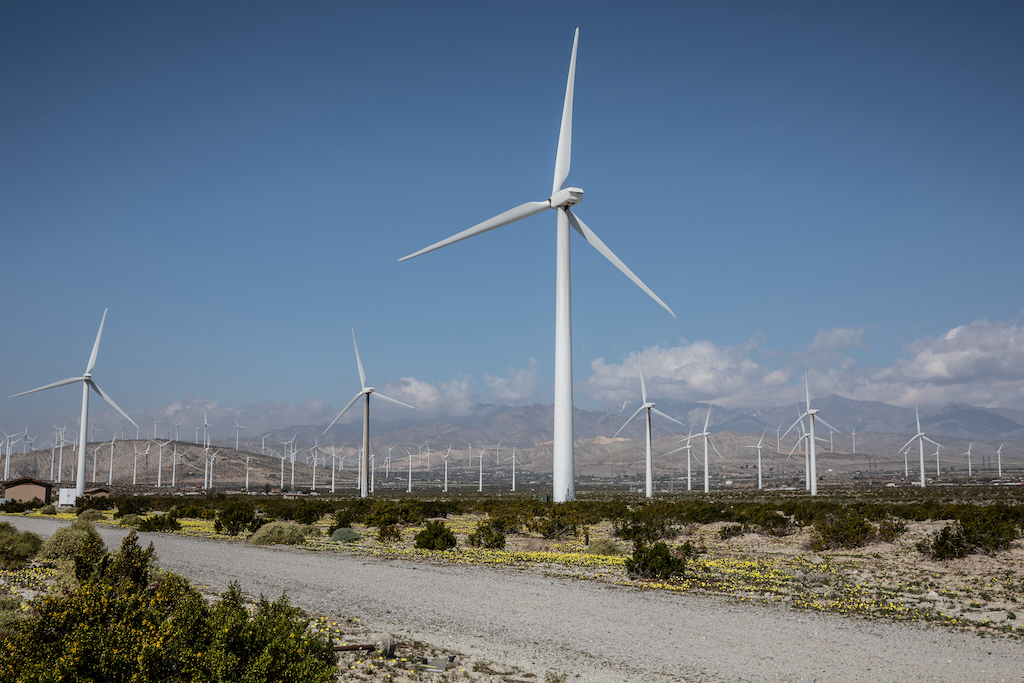
Provinces in the Cape have been leading the way in wind energy development, but Mpumalanga’s potential is now being recognised. Photo: Doug Leany
Wind resources
Addressing concerns about wind availability in Mpumalanga, Venn said: “The wind is slightly higher in the region. Instead of 900m tall towers, we are building 150m towers because the wind is very strong.”
Thabo Hlalele, Energy Research Centre manager at the CSIR, emphasised the importance of considering the environment, wind resources and grid infrastructure when deciding to start a wind farm in areas such as Mpumalanga. “A flat area at a higher elevation can offer better wind conditions, and proximity to the grid is crucial for transmitting power,” he told Oxpeckers.
“The topography of the area plays a significant role. A flat area at a higher elevation can offer better wind conditions than lower areas, which is often overlooked in the planning stages,” he explained.
Hlalele also emphasised the importance of wind resources. “If the wind resource has an average speed that is conducive for that area, it would definitely be a plus. The economics of a project hinge on this, as achieving an attractive cost of energy is essential for the project’s viability.”
Operational wind farms
Morongoa Ramaboa, chief communications officer of the South African Wind Energy Association (SAWEA), noted that South Africa currently has an installed capacity of 3,442MW from 34 operational wind farms – most of them based in the Cape provinces. More than 31GW is expected from potential projects in various stages of development, as indicated by the 2023 South African Renewable Energy Grid Survey.
Ramaboa said Mpumalanga’s existing infrastructure from coal plants provides a significant advantage in terms of readiness for wind energy projects. “Though the wind resources in Mpumalanga are lower than the Cape region, they are still high from an international perspective and are well suited for the development of wind facilities.
“While other provinces like the Eastern Cape and Western Cape have been leading in wind energy capacity, Mpumalanga’s potential is now being recognised,” she said.
SAWEA views the Seriti Green Ummbila Emoyeni project as vital for achieving national renewable energy goals: “It demonstrates the private sector’s interest in decarbonising energy supply chains, potentially boosting investment and policy support,” Ramaboa told Oxpeckers.
Thabo Molelekwa is an associate journalist at Oxpeckers Investigative Environmental Journalism, and a graduate of our #PowerTracker professional support and training programme. This investigation was supported by the African Climate Foundation’s New Economy Hub
- You can track the development of energy projects across Mpumalanga province on the Oxpeckers #PowerTracker tool
